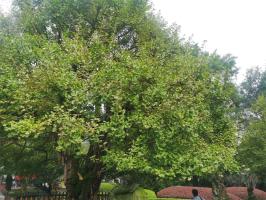Does Planting Trees Fight Climate Change?
Climate change has become one of the most pressing issues our planet is facing today. The increase in global temperatures, the melting of glaciers, and the frequency and intensity of natural disasters, among other things, are clear indicators that we need to act fast to mitigate the impacts of climate change. One solution that is often proposed is to plant trees to reduce carbon dioxide in the atmosphere. However, the question is whether planting trees can indeed fight climate change.
Why Planting Trees Matters
Trees are considered one of the most effective ways to capture and store carbon dioxide, which is one of the main greenhouse gases responsible for climate change. Trees absorb carbon dioxide from the atmosphere through the process of photosynthesis, which it then stores in its leaves, branches, and roots. A tree can store between 150 and 200 kilograms of carbon dioxide over its lifetime, which can make a significant contribution to reducing the amount of carbon dioxide in the atmosphere. Furthermore, trees also play a crucial role in providing oxygen, regulating water cycle, preventing soil erosion, and promoting biodiversity.
The Impact of Tree Planting Programs
Many countries and organizations worldwide have launched tree-planting programs as a means of offsetting carbon emissions and mitigating climate change. The idea behind these programs is that by planting trees, we can absorb more carbon dioxide from the atmosphere, creating carbon sinks that can reduce the levels of carbon dioxide concentration in the atmosphere.
Scientists and researchers have estimated the potential impact of tree planting programs on mitigating climate change. According to a study published in Science in 2019, planting 1.2 trillion trees globally could theoretically remove around two-thirds of the carbon dioxide emissions from human activity since the Industrial Revolution. Another study published in Science Advances in 2019 suggested that planting trees could reduce carbon dioxide in the atmosphere by about 25%, buying time for other measures to be put in place.
The Challenges of Tree Planting Programs
Despite its potential benefits, tree planting programs are not a silver bullet that can solve climate change. There are several challenges that need to be considered before implementing such programs.
First, planting trees on a massive scale requires land, and not all areas are suitable for reforestation. Areas with existing forests or other land use, such as agriculture or urban development, may pose challenges to tree planting programs. Additionally, planting monoculture forests may not be the best solution, as they do not promote biodiversity and may also be susceptible to pests and diseases.
Second, tree planting programs require a considerable amount of resources, including funding, labor, and materials. Some programs may also require long-term maintenance, which can be costly and require constant attention and resources.
Third, tree planting programs alone cannot solve climate change. They may buy time for other measures to be put in place, but they need to be part of a comprehensive strategy that includes reducing carbon emissions, transitioning to cleaner energy sources, and promoting sustainable practices in all sectors, including agriculture, transportation, and industry.
The Bottom Line
Planting trees is undoubtedly an essential step in mitigating climate change. It can help store carbon dioxide, improve air quality, and promote biodiversity. However, tree planting programs alone cannot solve climate change, and they need to be part of a comprehensive strategy that addresses the root causes of climate change. Ultimately, we need to adopt a more sustainable and holistic approach to managing our natural resources, reducing our carbon footprint, and promoting a healthier and more livable planet for all.

 how many times do yo...
how many times do yo... how many planted tre...
how many planted tre... how many pine trees ...
how many pine trees ... how many pecan trees...
how many pecan trees... how many plants comp...
how many plants comp... how many plants can ...
how many plants can ... how many plants and ...
how many plants and ... how many pepper plan...
how many pepper plan...





























